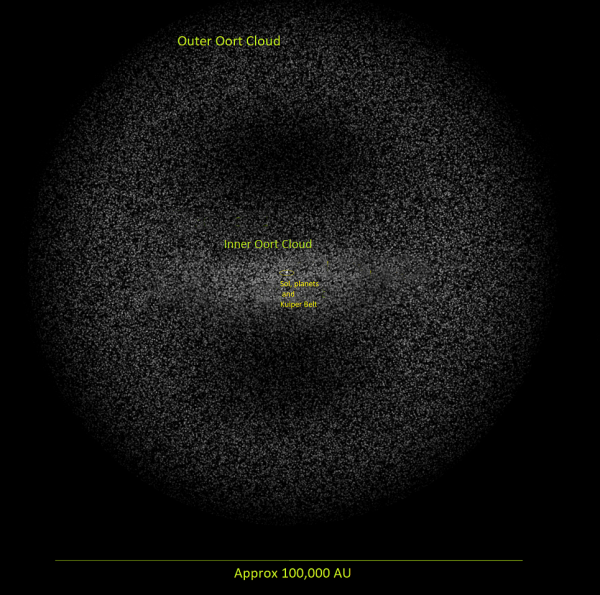BY LETTER
Oort Cloud
 Image from Steve Bowers |
The first Oort cloud was discovered around Solsys, and is named after its discoverer, Old Earth astronomer Jan Oort. These cold icy objects are remnants of the process that formed the planetary system of each star; small bodies in the protoplanetary cloud were disturbed into eccentric orbits by the newly-formed planets, and were later perturbed into more circular orbits by interaction with nearby stars and nebulae.
Oort clouds often hold a population of haloers and other hiders, sometimes associated with the Shadow Federation. In many cases these hiders are entirely independent and may not have any contact with any other culture. Some Oort cloud cultures are fully integrated with the rest of Terragen civilisation, and will accept technology, energy, material resources, and information resources from their neighbours.
Because individual objects in a star's Oort cloud are hard to find, some of these objects act as secretive data repositories known as Oort Vaults, while a number may have even more enigmatic roles to play.
For more details about the Solar System's Oort Cloud in the Current Era, see here.
Related Articles
- Backgrounders
- Haloers, Haloists
- Kuiper Belt
- Kuiperian Type Planetoid
- Oort Vault - Text by Anders Sandberg
Data storage systems on the edge of a solar system, holding inactive data in storage for future use. A common repository for inactive virch entities, planetary archives and long range statistics.
Appears in Topics
Development Notes
Text by M. Alan Kazlev
Additional material by Steve Bowers
Initially published on 17 December 2001.
Additional material by Steve Bowers
Initially published on 17 December 2001.






